MMP-10/stromelysin-2 promotes invasion of head and neck cancer
- PMID: 21998657
- PMCID: PMC3187776
- DOI: 10.1371/journal.pone.0025438
MMP-10/stromelysin-2 promotes invasion of head and neck cancer
Erratum in
- PLoS One. 2012;7(2). doi: 10.1371/annotation/ef18e199-e66d-43b9-97e0-96d1ab149193. Kiekhaee, Mohammad Reza [corrected to Keikhaee, Mohammad Reza]
Abstract
Background: Periostin, IFN-induced transmembrane protein 1 (IFITM1) and Wingless-type MMTV integration site family, member 5B (Wnt-5b) were previously identified as the invasion promoted genes of head and neck squamous cell carcinoma (HNSCC) by comparing the gene expression profiles between parent and a highly invasive clone. We have previously reported that Periostin and IFITM1 promoted the invasion of HNSCC cells. Here we demonstrated that Wnt-5b overexpression promoted the invasion of HNSCC cells. Moreover, stromelysin-2 (matrix metalloproteinase-10; MMP-10) was identified as a common up-regulated gene among Periostin, IFITM1 and Wnt-5b overexpressing HNSCC cells by using microarray data sets. In this study, we investigated the roles of MMP-10 in the invasion of HNSCC.
Methods and findings: We examined the expression of MMP-10 in HNSCC cases by immunohistochemistry. High expression of MMP-10 was frequently observed and was significantly correlated with the invasiveness and metastasis in HNSCC cases. Next, we examined the roles of MMP-10 in the invasion of HNSCC cells in vitro. Ectopic overexpression of MMP-10 promoted the invasion of HNSCC cells, and knockdown of MMP-10 suppressed the invasion of HNSCC cells. Moreover, MMP-10 knockdown suppressed Periostin and Wnt-5b-promoted invasion. Interestingly, MMP-10 overexpression induced the decreased p38 activity and MMP-10 knockdown induced the increased p38 activity. In addition, treatment with a p38 inhibitor SB203580 in HNSCC cells inhibited the invasion.
Conclusions: These results suggest that MMP-10 plays an important role in the invasion and metastasis of HNSCC, and that invasion driven by MMP-10 is partially associated with p38 MAPK inhibition. We suggest that MMP-10 can be used as a marker for prediction of metastasis in HNSCC.
Conflict of interest statement
Figures

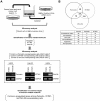
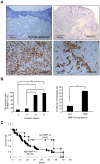
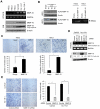
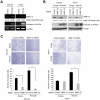
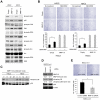
Similar articles
-
Periostin promotes invasion and anchorage-independent growth in the metastatic process of head and neck cancer.Cancer Res. 2006 Jul 15;66(14):6928-35. doi: 10.1158/0008-5472.CAN-05-4540. Cancer Res. 2006. PMID: 16849536
-
Fibroblasts and extracellular matrix differently modulate MMP activation by primary and metastatic head and neck cancer cells.Med Oncol. 2012 Jun;29(2):690-703. doi: 10.1007/s12032-011-9871-6. Epub 2011 Mar 6. Med Oncol. 2012. PMID: 21380786
-
Periostin directly and indirectly promotes tumor lymphangiogenesis of head and neck cancer.PLoS One. 2012;7(8):e44488. doi: 10.1371/journal.pone.0044488. Epub 2012 Aug 30. PLoS One. 2012. PMID: 22952986 Free PMC article.
-
Actin cytoskeletal mediators of motility and invasion amplified and overexpressed in head and neck cancer.Clin Exp Metastasis. 2008;25(4):289-304. doi: 10.1007/s10585-008-9154-6. Epub 2008 Mar 7. Clin Exp Metastasis. 2008. PMID: 18324357 Review.
-
Matrix metalloproteases in head and neck cancer.Head Neck. 2006 Jul;28(7):639-48. doi: 10.1002/hed.20365. Head Neck. 2006. PMID: 16470875 Free PMC article. Review.
Cited by
-
Matrix metalloproteinase profiling and their roles in disease.RSC Adv. 2023 Feb 21;13(9):6304-6316. doi: 10.1039/d2ra07005g. eCollection 2023 Feb 14. RSC Adv. 2023. PMID: 36825288 Free PMC article. Review.
-
The Use of Salivary Levels of Matrix Metalloproteinases as an Adjuvant Method in the Early Diagnosis of Oral Squamous Cell Carcinoma: A Narrative Literature Review.Curr Issues Mol Biol. 2022 Dec 12;44(12):6306-6322. doi: 10.3390/cimb44120430. Curr Issues Mol Biol. 2022. PMID: 36547091 Free PMC article. Review.
-
The role of periostin in tissue remodeling across health and disease.Cell Mol Life Sci. 2014 Apr;71(7):1279-88. doi: 10.1007/s00018-013-1494-y. Epub 2013 Oct 22. Cell Mol Life Sci. 2014. PMID: 24146092 Free PMC article. Review.
-
The integration of differentially expressed genes based on multiple microarray datasets for prediction of the prognosis in oral squamous cell carcinoma.Bioengineered. 2021 Dec;12(1):3309-3321. doi: 10.1080/21655979.2021.1947076. Bioengineered. 2021. PMID: 34224327 Free PMC article.
-
Down-regulation of IFITM1 and its growth inhibitory role in cervical squamous cell carcinoma.Cancer Cell Int. 2017 Oct 10;17:88. doi: 10.1186/s12935-017-0456-0. eCollection 2017. Cancer Cell Int. 2017. PMID: 29051711 Free PMC article.
References
-
- Mao L, Hong WK, Papadimitrakopoulou VA. Focus on head and neck cancer. Cancer Cell. 2004;5:311–316. - PubMed
-
- Neville BW, Damm DD, Allen CM, Bouquot JE. Epithelial Pthology. Oral and Maxillofacial Pathology. Edited by Neville BW. Philadelphia, W B Saunders. 1995;295-302
-
- Mamelle G, Pampurik J, Luboinski B, Lancer R, Lusinchi A, et al. Lymph node prognostic factors in head and neck squamous cell carcinomas. Am J Surg. 1994;168:494–498. - PubMed
-
- Fidler IJ. Critical factors in the biology of human cancer metastasis: Twenty-eighth GHA Clowes Memorial Award Lecture. Cancer Res. 1990;50:6130–6138. - PubMed
-
- Howell GMS, Grandis JR. Molecular mediators of metastasis in head and neck squamous cell carcinoma. Head Neck. 2005;27:710–717. - PubMed
Publication types
MeSH terms
Substances
LinkOut - more resources
Full Text Sources
Medical
Research Materials
Miscellaneous

